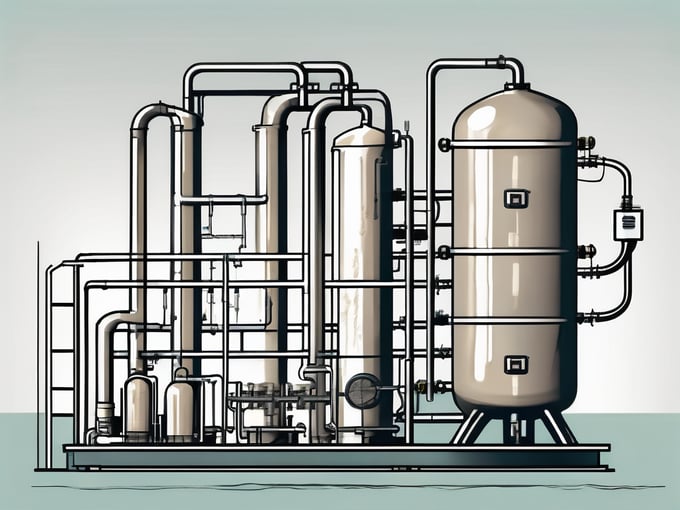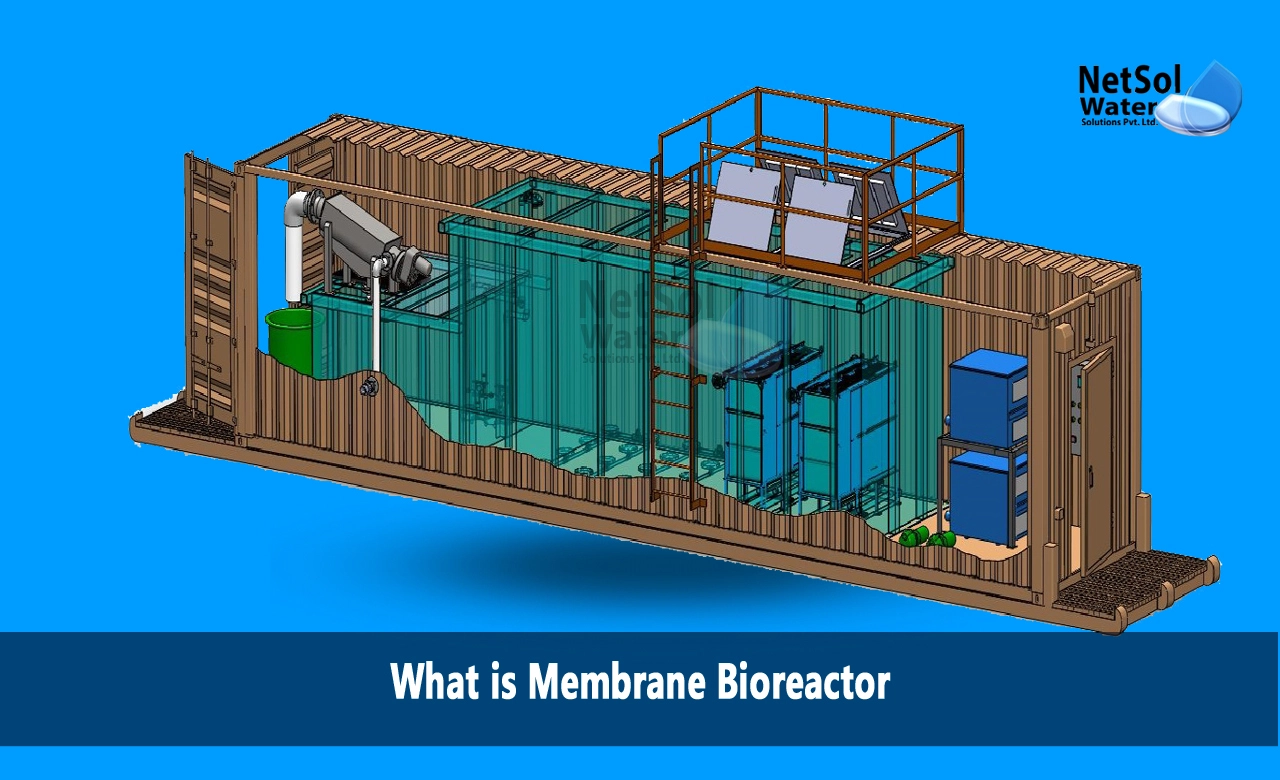The Role of Membrane Bioreactor in Achieving Higher Effluent Quality Standards
The Role of Membrane Bioreactor in Achieving Higher Effluent Quality Standards
Blog Article
Membrane Layer Bioreactors Explained: Effective Solutions for Tidy Water
Membrane layer bioreactors (MBRs) have become an advanced option for addressing the pressing difficulties of wastewater treatment. By integrating biological processes with innovative membrane layer filtration, MBRs not only enhance the top quality of treated water but likewise decrease the spatial requirements of treatment facilities. As environmental worries intensify, the function of MBR innovation in advertising sustainable water administration ends up being progressively substantial. The intricacies of their procedure, benefits, and prospective applications merit a closer examination to fully understand their impact on the future of water therapy.

What Are Membrane Bioreactors?
Membrane layer bioreactors (MBRs) are sophisticated wastewater therapy systems that integrate biological deterioration procedures with membrane purification innovation. This assimilation permits the efficient removal of impurities from water, making MBRs a favored choice in numerous applications, including municipal wastewater therapy and industrial effluent monitoring.

One of the critical benefits of MBRs is their ability to generate premium effluent, frequently ideal for reuse in irrigation or commercial processes. Furthermore, MBRs require a smaller sized impact compared to standard treatment systems, making them suitable for metropolitan setups where space might be restricted.
Furthermore, MBRs can properly deal with differing influent lots and are less prone to the effects of harmful shocks. These features contribute to their expanding appeal as a lasting solution for resolving the raising demand for clean water while decreasing ecological impacts.
How Membrane Bioreactors Work
While the operation of membrane bioreactors (MBRs) might seem facility, it fundamentally rotates around the synergy in between organic procedures and membrane layer filtering. MBRs incorporate an organic treatment process, usually activated sludge, with a membrane layer splitting up device to treat wastewater successfully.
In an MBR system, wastewater is very first presented right into a bioreactor where bacteria deteriorate raw material and various other impurities. The biological activity reduces the concentration of pollutants while promoting the growth of biomass. Following this organic treatment, the mixed alcohol undergoes membrane purification, which can be microfiltration or ultrafiltration, depending on the desired effluent top quality.
The membrane layers serve as a physical barrier, allowing water and small solutes to pass while retaining suspended solids and bigger particles. This allows the system to keep a high concentration of biomass within the reactor, boosting the treatment effectiveness.
In addition, the constant separation of cured water from the biomass promotes a small style and decreases the impact of the treatment facility. Overall, the combination of biological deterioration and membrane layer purification in MBRs causes reliable and efficient wastewater treatment, ensuring high-quality effluent appropriate for different applications.
Benefits of MBR Technology
One of the crucial advantages of membrane layer bioreactor (MBR) modern technology is its capability to produce high-grade effluent with a considerably reduced footprint compared to traditional wastewater treatment approaches. MBR systems properly integrate biological treatment and membrane filtration, causing exceptional removal of pollutants, including put on hold solids, virus, and raw material. This capability results in effluent that typically fulfills or goes beyond strict regulative standards for reuse and discharge.
Additionally, MBR innovation permits greater why not try these out biomass focus, which improves the treatment efficiency and reduces the required activator volume. This portable layout is especially valuable in metropolitan locations where space is restricted. The operational flexibility of MBR systems additionally suggests they can adapt to differing influent top qualities and circulation rates, making them suitable for a vast range of applications.
Moreover, the decreased sludge manufacturing connected with MBR processes adds to lower operational and upkeep prices. The membrane layers offer as a physical obstacle, reducing the danger of obstructing and making it possible for longer operational periods between cleansing. On the whole, the benefits of MBR technology make it an attractive service for sustainable wastewater treatment, attending to both ecological worries and the demand for reliable source monitoring.
Applications of Membrane Layer Bioreactors
With their convenience and efficiency, membrane layer bioreactors (MBRs) locate applications throughout numerous fields, consisting of metropolitan wastewater therapy, commercial procedures, and even water improvement. In local settings, MBRs offer a small service for treating wastewater, effectively getting rid of impurities while all at once generating high-grade effluent that fulfills rigid regulative requirements. This makes them particularly ideal for locations with restricted space.
In commercial applications, MBR modern technology is used for treating procedure water, specifically in markets such as food and beverage, drugs, and petrochemicals. These industries benefit from MBRs' capacity to manage high organic lots and their performance in recuperating valuable sources from wastewater, such as nutrients and water.
Additionally, MBRs play an important duty in water improvement initiatives, enabling the reuse of dealt with wastewater for irrigation, commercial processes, or also as drinkable water after further therapy (Membrane Bioreactor). Their performance in eliminating toxins and microorganisms makes them a dependable selection for making sure water quality in different reuse applications
Future of Water Treatment Solutions
The future of water treatment remedies is poised for transformative innovations driven by technological innovation and boosting environmental recognition. As worldwide water deficiency becomes a pushing concern, new techniques, including membrane bioreactor (MBR) systems, are readied to play a pivotal function in boosting the efficiency and sustainability of water treatment procedures.
Arising technologies such as expert system and device discovering are anticipated to optimize treatment operations, permitting for real-time monitoring and predictive maintenance. This will certainly boost the total reliability and efficiency of water therapy centers. In addition, developments in membrane layer products, such as graphene and nanofiltration, promise to enhance permeation rates and minimize fouling, bring about reduced power consumption and operational expenses.
In addition, the assimilation of eco-friendly energy sources into water therapy plants will certainly add to greener practices. The circular economic situation version will also gain grip, motivating the healing of valuable sources from wastewater, such as nutrients and power.
Conclusion

Membrane layer bioreactors (MBRs) have arised as a sophisticated option for addressing the pushing challenges of wastewater therapy. By integrating organic processes with sophisticated membrane filtering, MBRs not just improve the top quality of treated water yet also minimize the spatial requirements of treatment centers.One of the key benefits of membrane layer More Info bioreactor (MBR) technology is its capacity to produce premium effluent with a considerably lowered footprint contrasted to standard wastewater treatment techniques.With their convenience and efficiency, membrane layer bioreactors (MBRs) locate applications across various markets, consisting of municipal wastewater treatment, commercial procedures, and also water reclamation.In conclusion, membrane bioreactors stand for a substantial advancement in wastewater treatment innovation, incorporating organic procedures with reliable membrane layer filtration to produce top notch effluent.
Report this page